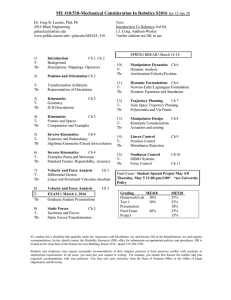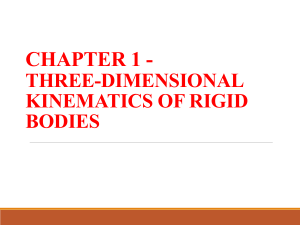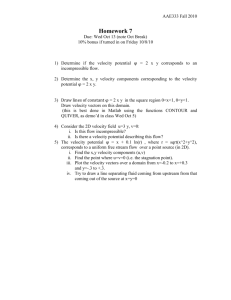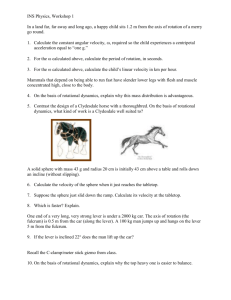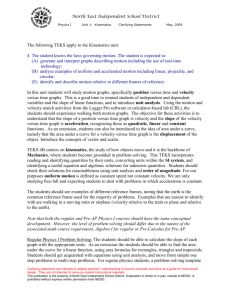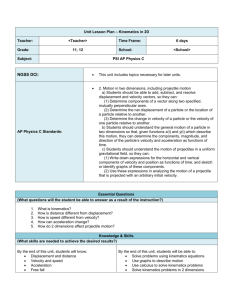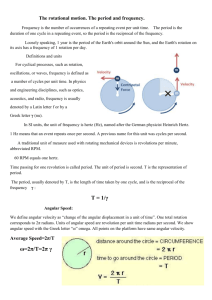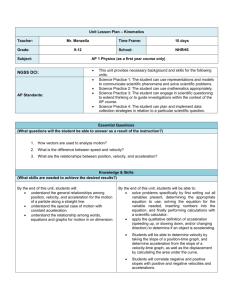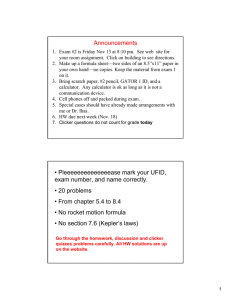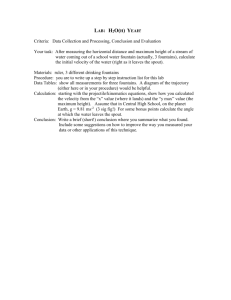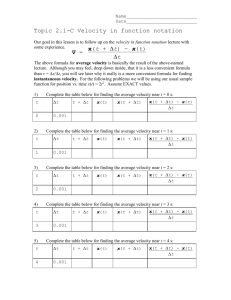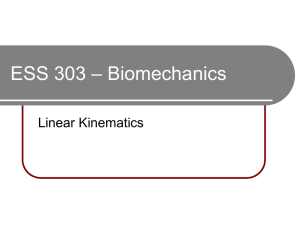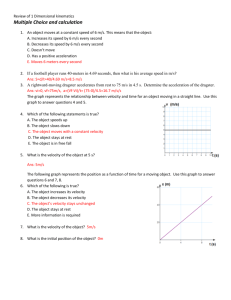Lecture 15 - Relative Motion Analysis
advertisement
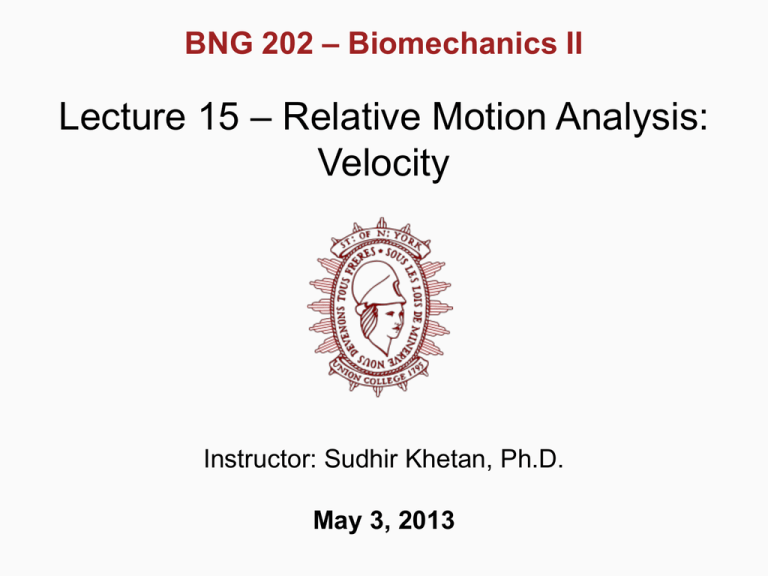
BNG 202 – Biomechanics II Lecture 15 – Relative Motion Analysis: Velocity Instructor: Sudhir Khetan, Ph.D. May 3, 2013 Types of rigid body motion • Kinematically speaking… B – Translation A • Orientation of AB constant – Rotation B B • All particles rotate about fixed axis – General Plane Motion (both) • Combination of both types of motion A A B focus of today! A Kinematics of translation • Kinematics – Position y B rB rA rB / A – Velocity vB vA A rB rA – Acceleration x aB aA • True for all points in R.B. (follows particle kinematics) Simplified case of our relative motion of particles discussion – this situation same as cars driving side-by-side at same speed example fixed in the body Relative motion analysis: velocity • Transl. & Rotation (General Plane Motion) y rB/A – Position B rB rA rB / A • Let’s say motion of A is known • We would like to find motion of B vB v A vB / A where rotation why is this? v B / A rB / A and (ω is rotation of member about A) drA drB rA – Velocity (time deriv) translation drA A rB x dθ rB/A (new) drB/A Review of cross products • See Chapter 4 of your statics text for full details A B Ax ˆj kˆ Ay Az Bx By Bz iˆ or Example Problem If the block at C is moving downward at 4 ft/s, determine the angular velocity of bar AB at the instant shown. (F16-58, 2 rad/s) Strategy: In beginning of the solution (“data” section should just be the sketch of the setup), what other information do we know about the components? Example Problem If rod AB slides along the horizontal slot with a velocity of 60 ft/s, determine the angular velocity of link BC at the instant shown. (F16-11, 48 rad/s)
